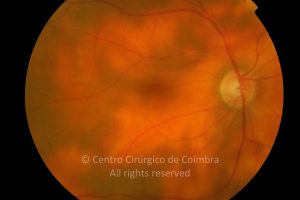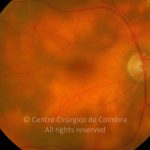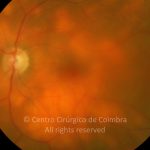A Epiteliopatia Pigmentar Placóide Multifocal Posterior Aguda (EPPMPA) é uma doença inflamatória que afeta a coroideia, epitélio pigmentado da retina e retina. Provoca uma rápida perda de visão central e paracentral e afeta geralmente indivíduos saudáveis, entre os 20-40 anos de idade, após uma infeção sistémica.
A origem exata da EPPMPA permanece desconhecida, mas acredita-se que seja uma vasculite induzida por hipersensibilidade e que representa uma obstrução primária da circulação da coroideia, com degenerescência secundária do EPR.
Os sintomas incluem metamorfopsias, fotopsias, escotomas e baixa de visão.
O exame do fundo ocular mostra múltiplas lesões subretinianas, branco-amareladas, no polo posterior, geralmente bilaterais e assimétricas. A angiografia fluoresceínica mostra, nas fases iniciais, áreas placóides hipofluorescentes e, nas fases tardias, lesões hiperfluorescentes.
Resolve-se em semanas ou meses, mas deixa áreas de atrofia e hiperplasia do epitélio pigmentado da retina.
Diagnóstico Diferencial:
- Coroidite multifocal
- Sarcoidose
- Doença de Vogt-Koyanagi-Harada
- Síndroma das manchas brancas









